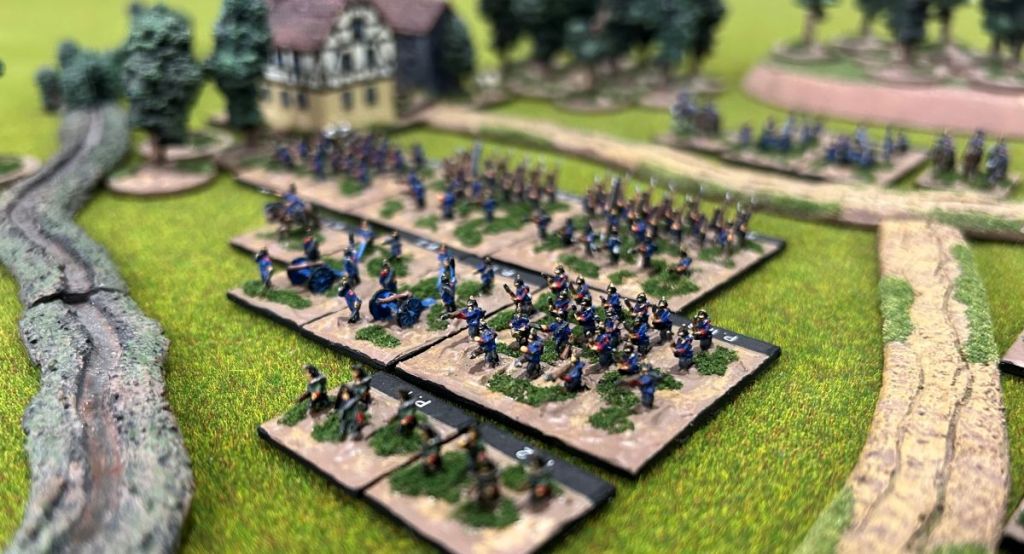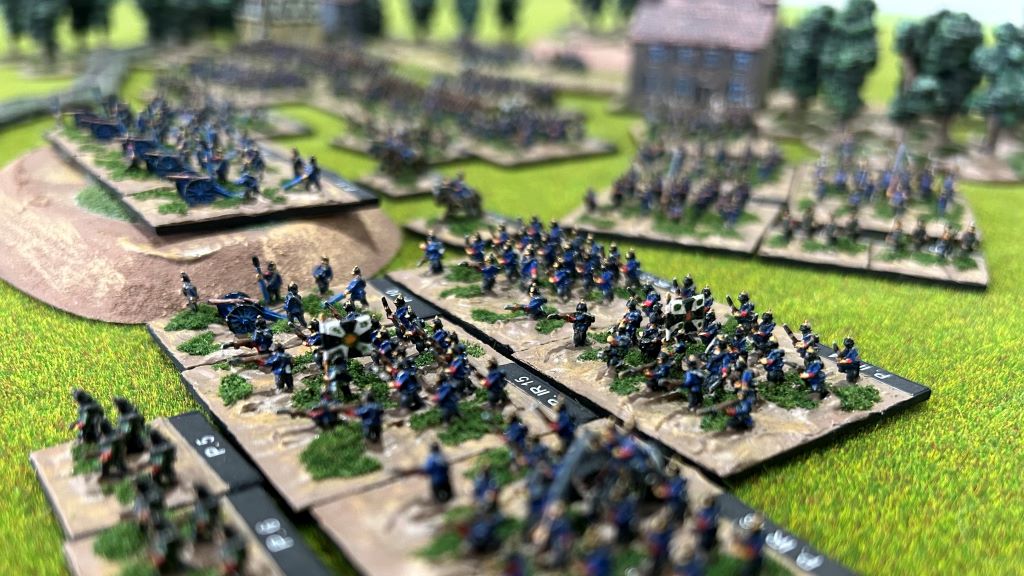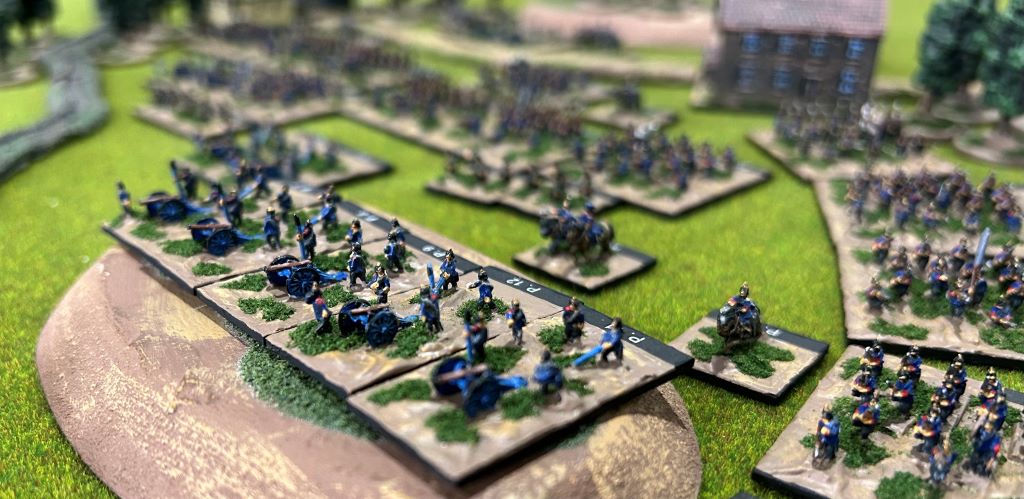A number of years ago I was fortunate to visit a selection of Franco-Prussian War battlefields, specifically Wissembourg, Froeschwiller, Mars-La-Tour, Gravelotte and Loigny-Poupry. Soon after I purchased a number of 6mm Heroics & Ros miniatures from their Franco-Prussian War range. The bulk of the French have been painted and used several times over recent years, but the Prussians have remained “in stock”, so to speak, awaiting their turn on the painting table. Recently I took the plunge and began the much overdue task of painting them. This week the first batch of miniatures have been completed.
It seems fitting to recap on the Prussian organisation in 1870. I am using Volley & Bayonet for my Franco-Prussian War gaming and the base formation is the infantry regiment which typically represents around 3,000 men. Four such regiments form a division. Each division also contains a jäger battalion, or schützen if guard a division, as well as 24 cannon. The artillery comprising 12 field and 12 heavy guns. Finally, each division included a cavalry regiment or around 500 men.
Two such divisions form a corps which is reinforced by a further 36 cannon. Of these 12 would be field, 12 heavy and 12 horse. Three corps, sometimes more, would form an army – of which there were several.

The infantry are on 1.5″ bases while the jäger are on smaller bases and can operate independently, or be pushed together to act as a formed battalion. Below, another division is shown in the foreground with the previous division visible in the distance.

The Heroics & Ros Prussian range has a variety of figure poses across the various packs. This enables some variety within each regiment. That said my regiments have the bulk of the miniatures either marching or advancing. Both however have additional figures firing in the front.

Because of the more open formations of the period I have settled on having between 20 to 24 figures on a regimental base. I use a reduced ground scale so each base measures 1.5″ square which equates to 300 yards of frontage as I use what is commonly called “half scale”. This allows me to refight very large battles with a reasonable number of miniatures and a reasonable sized table. This could be important if I am to refight the Battle of Gravelotte with its 300,000 combatants.

You will recall from the earlier organisational information that each infantry corps has a significant number of guns. Specifically, 72 field artillery pieces and 12 horse guns.

Now while initially I have formed two corps I have painted the foot artillery for three corps, a not insignificant 18 artillery battalions. Above, a selection of the artillery from one corps. Each artillery stand in Volley & Bayonet represents 12 guns.

While Franco-Prussian War project is far from complete I feel I have made good progress. Now its time to start some Prussian cavalry and see what I need to order as reinforcements from Heroics & Ros. I also need to paint some additional French…
It’s always interesting to read your posts Keith. Another period that I know little about. Thanks for expanding my horizons.
Greg, I’m very pleased it was of interest. After posting I started to wonder if I was rambling unnecessarily. Your comment has put my mind to rest.
Lovely stuff as usual Keith. I might be taking the Franco-Prussian plunge myself as I have the FPW stl files for Henry Turners 3d prints.
Thanks Iain, I appreciate the feedback.
Its a fascinating period and the tension between the evolving weapons and tactics is particularly interesting to me. In the last few years there seem to be a few modern studies coming out in English which is also useful and I suspect will drive further interest.
Thanks for the interesting post, I may have to get back to finish painting my FPW figs.
I am pleased it was of interest John. Good luck with your own FPW miniatures.